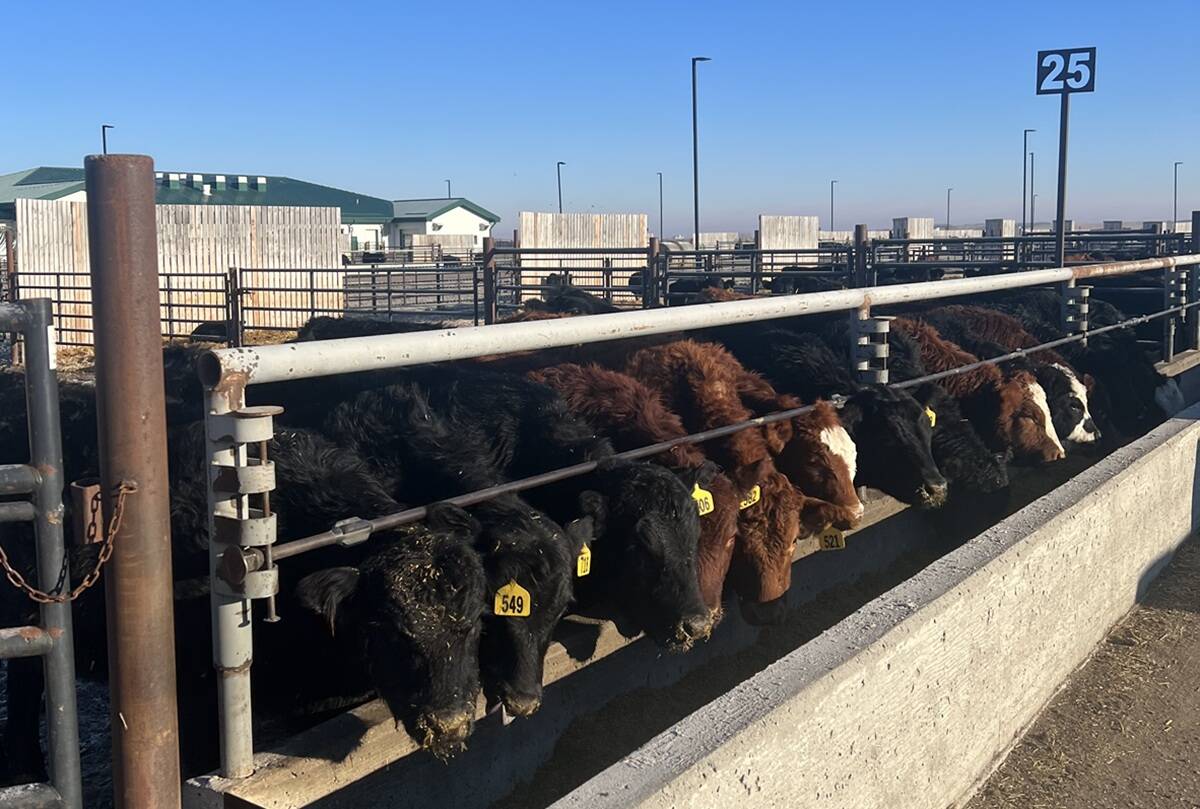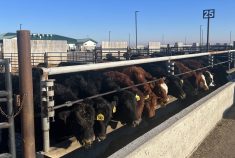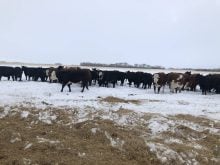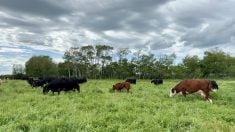As winter slowly gives way and your thoughts turn to calving and seeding, it is understandable that next winter’s feed supply may not be first and foremost on your mind. However, depending on the nature of your operation (hay versus silage versus extensive winter grazing) you may or may not have the luxury of time when making decisions regarding your 2015 winter feeding program. Furthermore, there are several relatively recent developments in winter feeding strategies that may fit your operation. For example, if you have traditionally grown barley silage as a forage source, the availability of relatively low heat unit corn varieties may provide an alternative. Similarly, alternatives to traditional hay-based feeding programs such as swath grazing annual cereal crops, seeding annuals for greenfeed or grazing standing corn all require advanced planning if one wishes to utilize these as winter feed options. The following discussion compares the relative feed value of some of these options in an effort to help you with planning next winter’s feeding program.
Read Also

Managing newly received calves in the feedlot
What should cattle feeders focus on after calves arrive at the feedlot?
First let’s compare barley versus corn silage. Cattle producers in Eastern Canada have been familiar with the value of corn silage for many years, but for many western Canadian producers, it is a relatively new option. The primary benefits of growing corn for silage include the potential for increased dry matter (DM) yield and superior silage in terms of energy content. To illustrate, let’s compare barley silage at 65 per cent moisture and harvested at the mid-dough stage of maturity with corn silage at 65 per cent moisture and harvested at an optimal stage of kernel starch formation (i.e. one-half to two-thirds milk-line). Under these conditions barley silage will typically range in total digestible nutrient (TDN) content from 60 to 65 per cent (DM basis) while corn silage will typically range from 67 to 72 per cent TDN (DM basis). This difference in energy content translates to less feed dry matter required for maintenance or gain purposes and thus the potential for more efficient performance when corn silage is fed. While corn silage is usually superior in terms of energy content, it should be noted barley silage at 10 to 12 per cent crude protein (CP) is typically two to three percentage points higher in this important nutrient.
- More ‘Nutrition’ with John McKinnon: Marketing versus production risk in your cattle operation
Achieving optimal whole plant moisture and maturity characteristics for ensiling barley is typically not an issue for growers. Failure to do so is usually associated with harvest management (i.e. timing of cutting, packing, covering) rather than with the environment. In contrast, with corn silage, environmental issues such as inadequate moisture or failure to achieve sufficient heat units over the growing season can have a marked negative influence on dry matter yield and on the energy content of the resulting silage. For example, lack of sufficient heat during the growing season will result in immature cobs (i.e. lack of starch content) which in turn will reduce the energy content of the silage. As well, harvest likely will have to wait for a killing frost to reduce whole plant moisture levels to less than 70 per cent for ensiling. In such cases, the dry matter yield is reduced and the economics of growing corn for silage become questionable.
Not everyone has the luxury of using silage as a forage source and must rely on putting up hay or some other form of conserved forage to generate a winter feed supply. Most of the recent innovations in this area have focused on reducing the cost of feeding (bale feeding under extensive situations; grazing stockpiled pasture with strategic supplementation of energy and/or protein supplements). While not completely eliminating the need for hay, one innovative alterative that has generated interest among cow-calf operators is grazing standing corn. As with silage, growing corn for winter grazing has potential to generate a large volume of feed with a nutrient profile that matches or exceeds most hay crops. For example, data generated by the Western Beef Development Centre on five different corn varieties showed that whole crop corn sampled in November of 2011 ranged in CP content from 6.7 to 9.7 per cent and from 57 to 67 per cent TDN (DM basis). These values meet or exceed the energy requirements of beef cows throughout gestation. Forage dry matter yields ranged from 4.0 to almost 6.0 tonnes per acre while grazing costs averaged $0.94 and ranged from $0.70 to $1.40 per head per day. As with growing corn for silage, it is critical to select a variety that has been developed for your local area in terms of corn heat units. Corn needs heat for optimum growth and development and failure to achieve adequate heat units will reduce yield and nutrient content of the crop. As well, a certain degree of caution is necessary when grazing corn as unlimited access can result in overgrazing of cobs and issues with grain overload.
In closing, it’s never too early to start thinking about your winter feeding options. Whether you grow silage, put up hay, utilize extensive grazing strategies or are looking to alternatives such a standing corn, now is the time to be making decisions before the passage of time makes them for you.

















